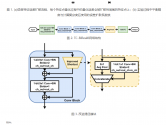CIOMP specializes in optics and machenics, like telescope lenses and satellite camera including the stablizer structures. We know all those optical observation sats are from CIOMP. SIOM started in 1964 focusing on laser as its website says. So they have different areas of expertise.so i heard apparently CIOMP is not great institution
I looked back on all the images i collected on EUVs
I see at least 4 patents from SIOM and nothing from CIOMP
The only thing i see from CIOMP is that CAS visit.
@tokenanalyst do you know what I mean?
something fishy about SIOM in so many patents, but CIOMP building prototype?
For EUV, I can see the job natually divided between the two. SIOM works on the light source, CIOMP build the machine.


